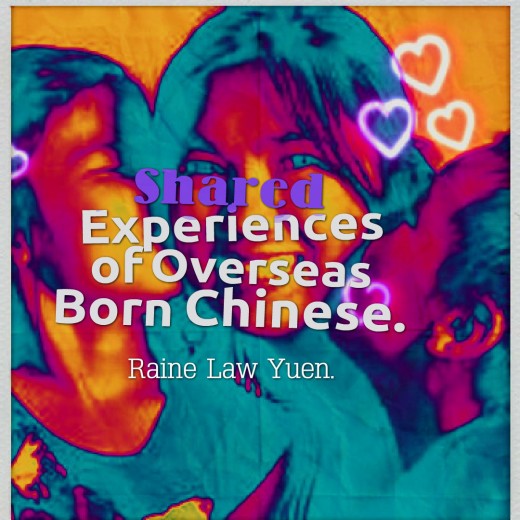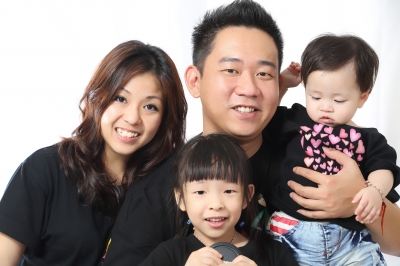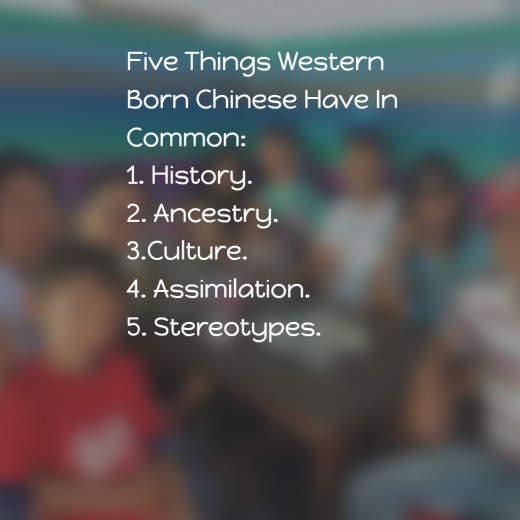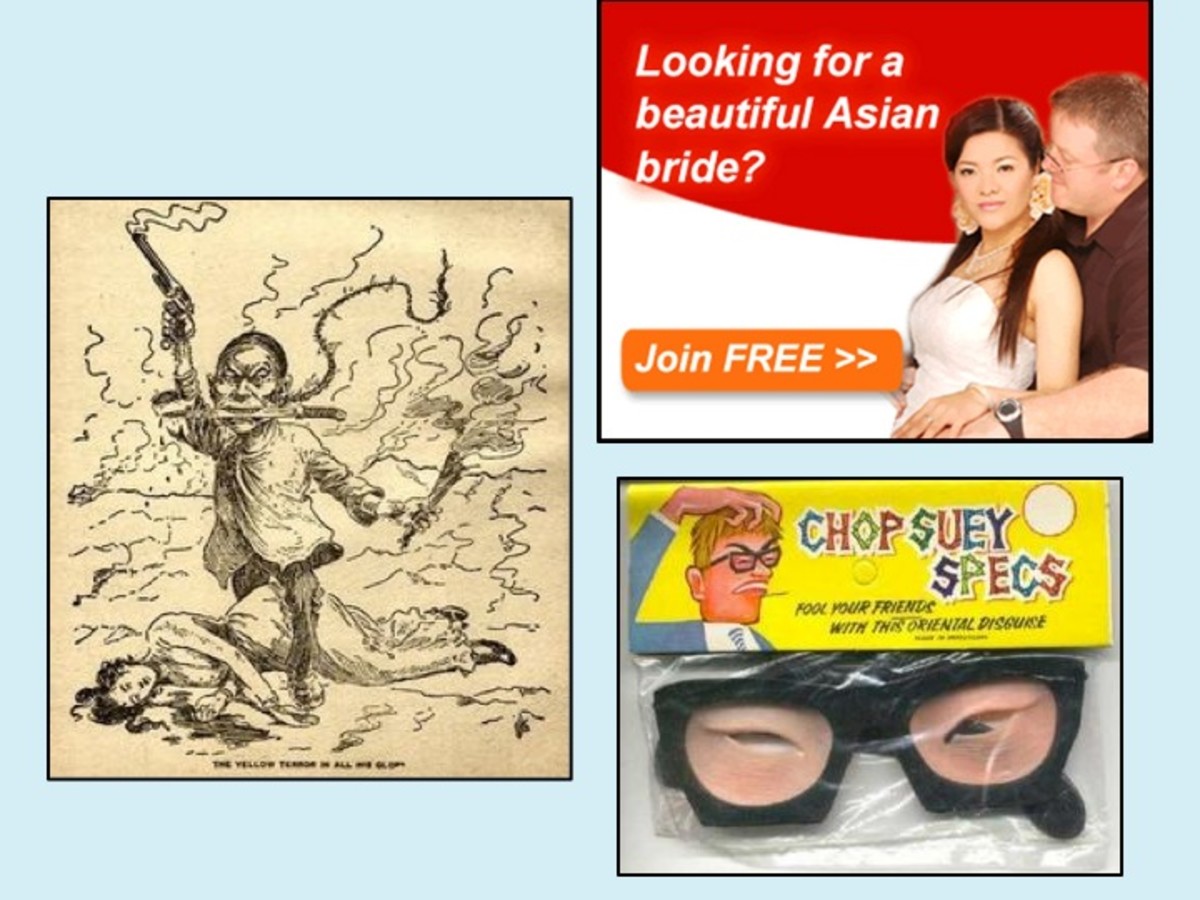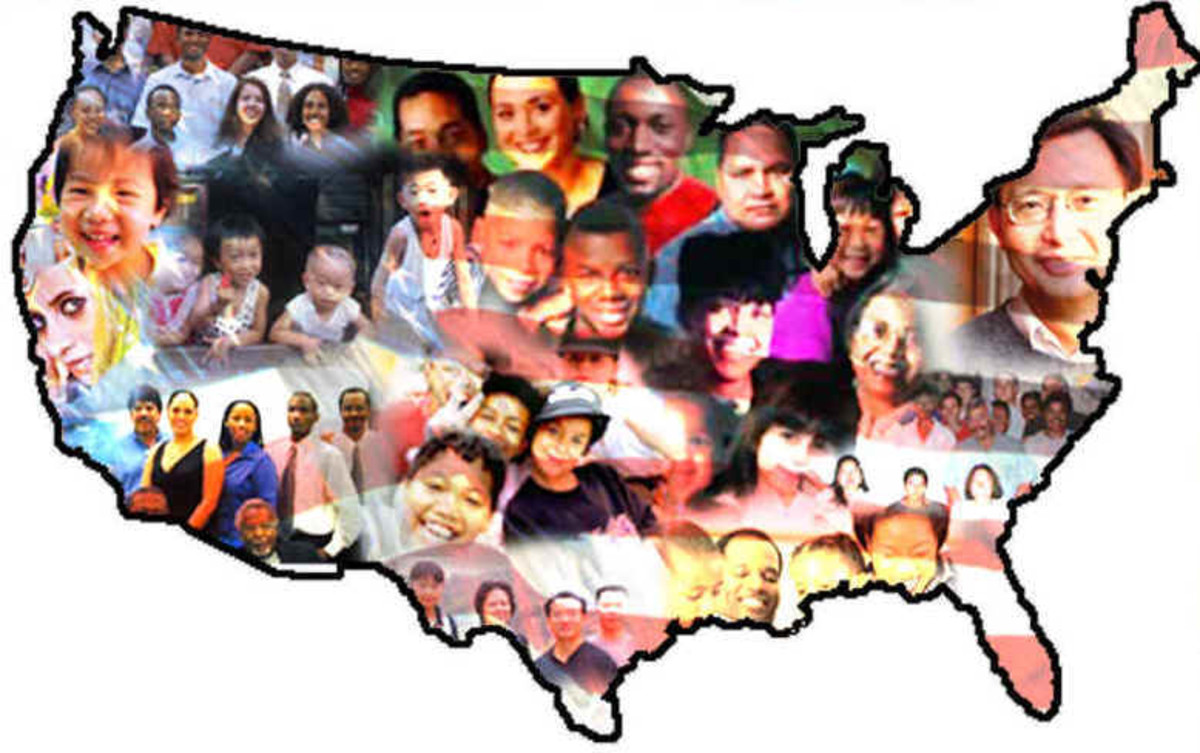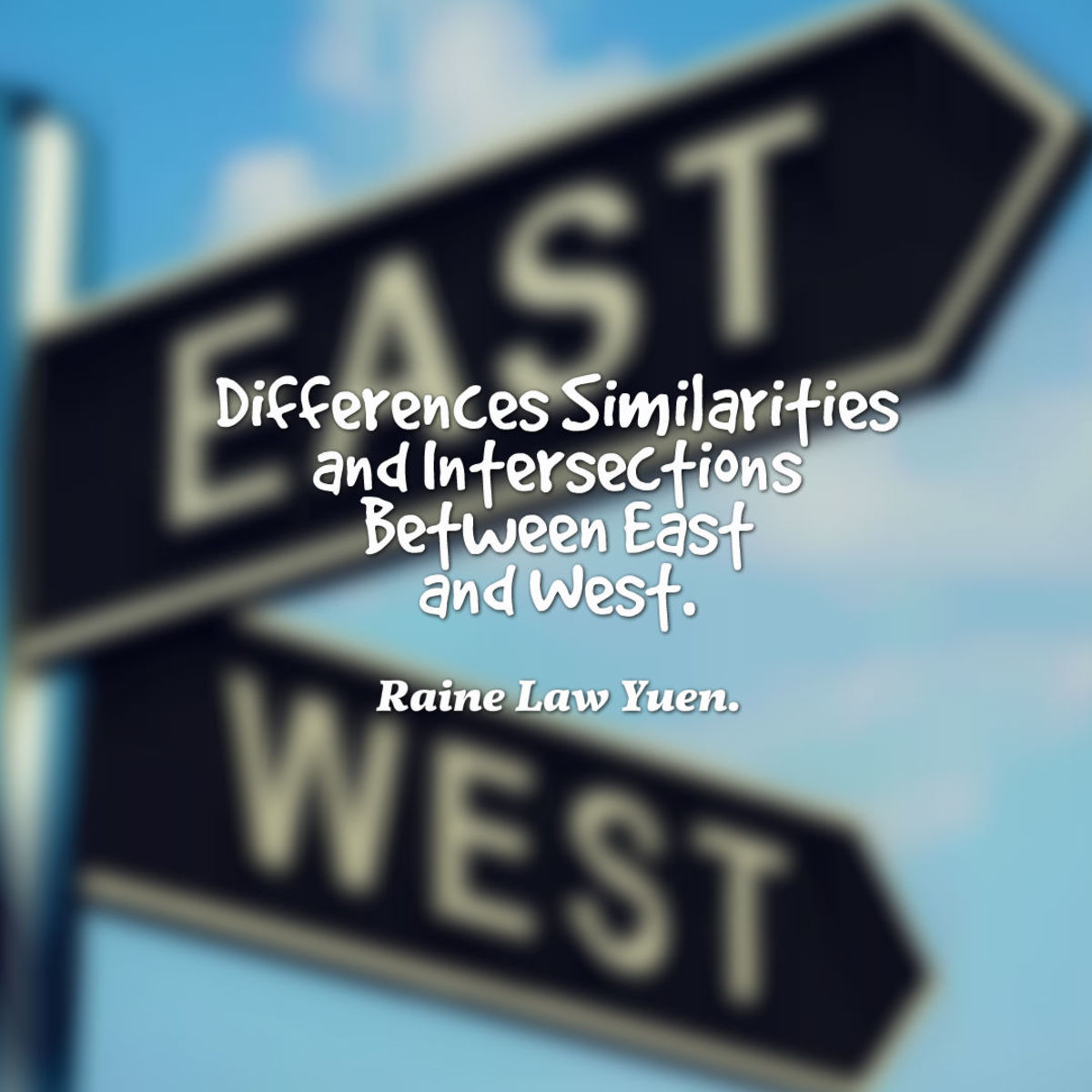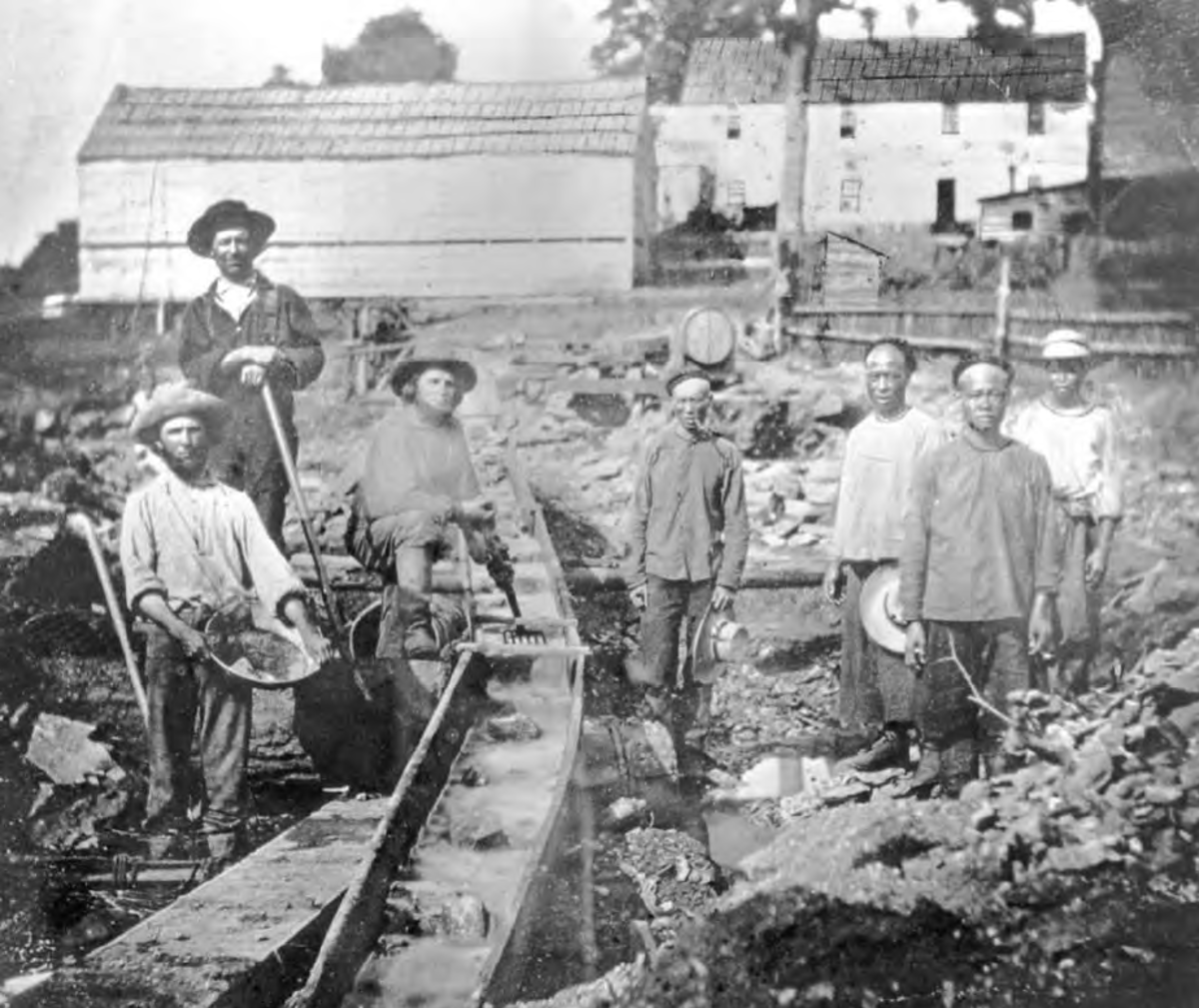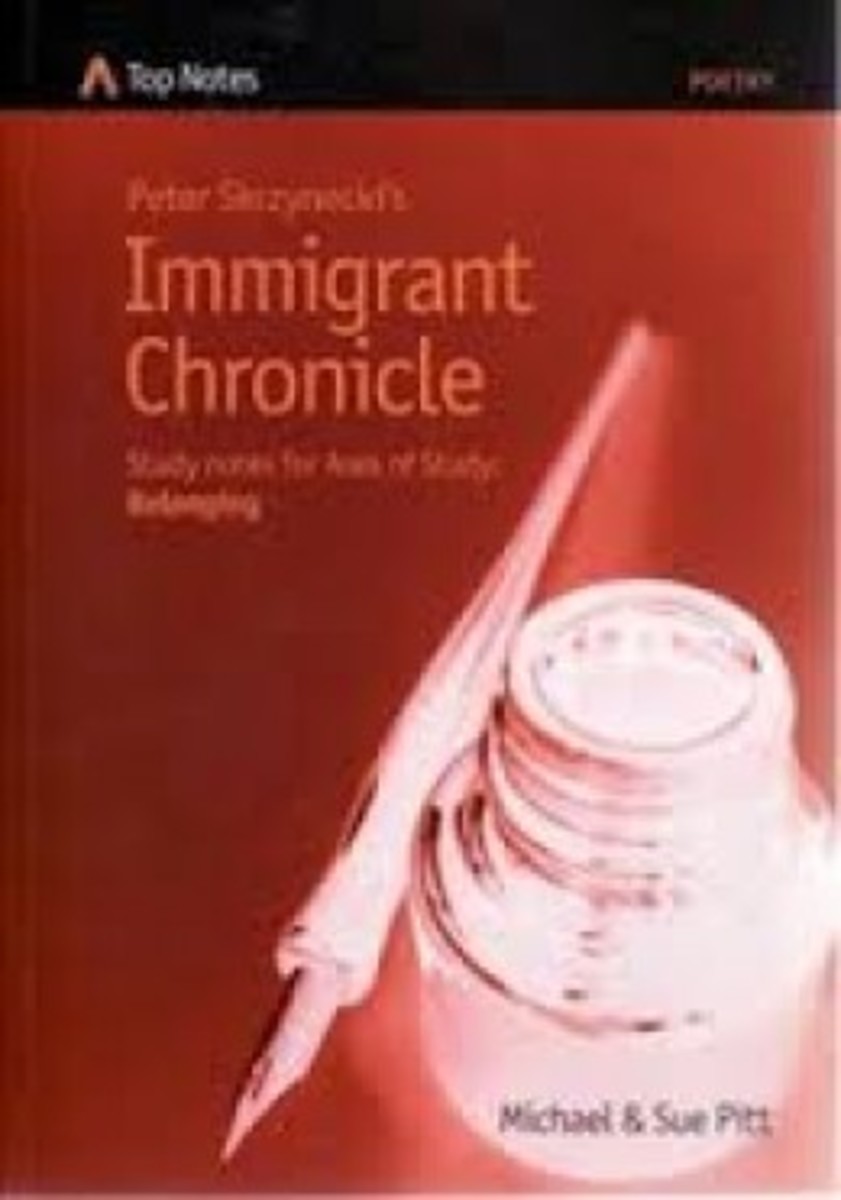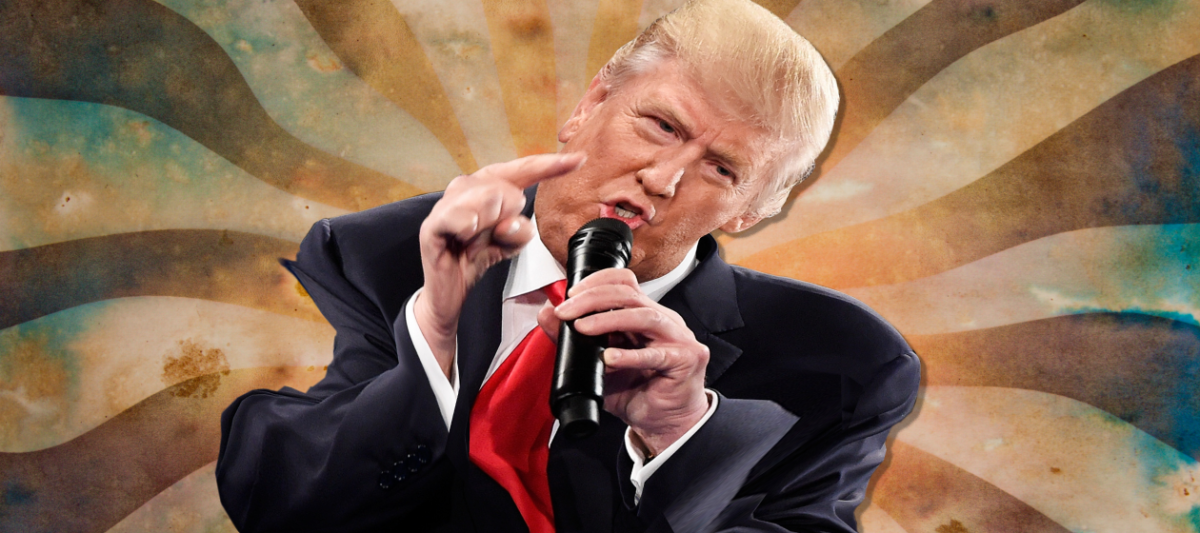Shared Experiences of Overseas Born Chinese.



Definition of Overseas Born Chinese.
The Overseas-Born Chinese (OBC) refer to people of Chinese decent born outside of China. Westernized Chinese are those assimilated into Western cultures and are descendants from Chinese migration to Western shores which steadily increased since the mid-nineteenth century.
Popular countries to immigrate included English-speaking countries such as the United States and commonwealth countries under Britain due to the need for labor, expanding economies and the discovery of gold in the mid 19th century. The USA, Canada, Britain, Australia, New Zealand and South Africa were popular destinations and continue to be to this day.
Chinese migration to Western British influenced regions followed a similar path.
Early immigrants migrated as a result of famine, wars and a search for a better life, whilst later immigrants from the 60's and 70's were more educated and migrated as a result of the relaxing of immigration laws as part of multicultural policies.
Today with China's increasing global influence, Chinese and Westerners are increasingly migrating to China as opportunities become more available.
Assimilation Process of Overseas Born Chinese.
Assimilation is the term given to define integration of immigrant communities over time.
Overseas Chinese vary widely as to their degree of assimilation, their interactions with the surrounding communities and their relationship with China.
According to research - Four changes happen.
Socioeconomic Status: This refers to the level of an individuals Education, Occupation and Income.
Over time immigrant communities catch up with local communities in education, occupation and income.
The model minority stereotype is typically associated with Chinese and East Asian communities who are perceived to achieve a higher degree of socioeconomic success than the population average.
Although this is considered to be a positive stereotype, it is also cause for concern and anxiety for many that believe it creates unrealistic expectations and creates a situation where Chinese and East Asians are overlooked as a minority class needing any assistance.
Spatial Concentration: Geographic or Residential Patterns.
As immigrant communities become better educated with higher income earnings, the tendency is to move away from ethnic communities.
Language Attainment:
Research indicates that the first generation of immigrants speak mostly their mother tongue language with very little of the dominant community's language.
The second generation tend to be bilingual. They speak both the mother tongue and the dominant community language.
The third generation speak only the language of the dominant community.
Intermarriage.
Increased assimilation results in increased intermarriages.
Current global statistics indicate that East Asians have one of the highest intermarriage rates among minority groups.
East Asian and mixed Asian population being one of the fastest growing minorities.
Consequences of Assimilation
To many OBC’s being assimilated means that:
- They may not speak their mother tongue or speak very poorly.
- They loose touch with traditional customs.
- Their friends and significant others are drawn from the local community
- Identity is more of a constructed one as opposed to a primordial one as found in traditional cultures.
Chinese Ancestry.
Chinese and East Asians living outside of China share Chinese ancestry and cultural traditions.
The most common customs that endure over generations are those relating to cuisine, Chinese New year and the influence of Confucianism.
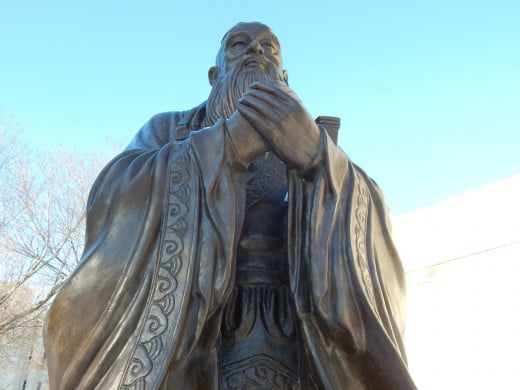
Confucius Influence on E.Asians & The Overseas Born Chinese.
Chinese culture influenced East Asian cultures and values with the major influences being Confucianism, Buddhism and Daoism.
Buddhism was exported to China from India and is based on finding enlightenment through harmlessness and non-attachment,. assimilated Westernized OBC's mostly converted to Christianity. Although studies indicate a general sharp increase towards being agnostic or atheist in multicultural societies today.
Confucius provided China with a moral code centered around the five virtues of benevolence, right conduct, integrity, justice, and loyalty.
Daoism founded by Lao-Tze or Taoism is a teaching based on being close to nature and honoring one's ancestral spirits. OBC's tend to follow a more Westernized materialistic value system
Mid 19th Century Discriminatory Laws.
New Immigrants faced numerous challenges and met with a lot of resistance due to their different cultural backgrounds and perceived threat that local communities believed they posed with regard to job security and cultural assimilation.
As a consequence, a number of discriminatory laws were passed from the mid 19th century especially around trade restrictions.
In order to survive, the new immigrants typically opened small businesses to keep their families together.
Retail cafes, restaurants, and dry cleaning establishments were characterized by long hours and hard work which often resulted in children spending little quality time with their parents.
The Influence of British Colonialsm on OBC's.
Britain ruled a third of the globe in the 19th century until the mid 20th century.
Britain preferred to rule their empire by distance but maintained their influence, supremacy and global reach through foreign policy and cultural influences. The most notable being: The English language, the Westminister system of law, democracy, education and, sport.
These influences are still felt today and provide another dimensional similarity for OBC's residing in British-influenced Westen countries.
The church played a vital role by helping new immigrants to assimilate into new found homelands, providing a link between the country of origin and the new homeland. As a consequence many converted to Christianity, in particular, the Catholic church played an instrumental role, with many Chinese children receiving an education under Catholic controlled schools which enabled them to obtain tertiary degrees after completing school and assimilate into Western society.
Dual Culture.
Bi-cultural identity is one that combines two cultures within a specific region. Overseas Born Chinese residing within Western mainstream cultures are sometimes referred to as 'Bananas' a slang term for Eastern and Western values that defines the East-West dual identity.
The challenge of integrating both cultures is articulated in numerous published works.
"Building a bicultural identity has been a balancing act for me, as it has been for many Asian-American millennials. Some of us identify more strongly with our Asian side when we're around our parents and relatives but stick to our American side around non-Asian peers, wanting to feel comfortable and accepted in both communities".
"Biculturalism seems to me to be a dichotomy and a paradox; you are both cultures and at the same time, you are neither" —19-year-old first-generation Chinese American.
Currently, much of the information and research about mixed Asian cultural and ancestry identity originates from the USA due to it's sizable immigrant Asian population. The experiences and research however are similar around the world due to the common experience and history of Chinese immigration to foreign shores.
According to research, the process of integrating a dual cultural identity follows a familiar path. An initial struggle to find ones place within two differing social norms. The individual tends to first prefer one culture over the other before integrating and acknowledging both cultures and finally the individual selects a third culture that consists of integrating elements of both cultures according to ones circumstances.
Overseas Born Chinese living in the West tend to follow Christian practices integrated with Chinese tradition. For instance a child may be christened at a church with relatives celebrating with a traditional naming ceremony that includes the giving of red eggs and ginger to guests to symbolize joy and renewed life.
Similarly a wedding ceremony may be held at a church with a Chinese celebration usually at a hired hall that consists typically of between 8-10 courses with each dish carrying a symbolic meaning.
As people find themselves further assimilated into mainstream cultures, they often loose most of their family traditional culture.
Asians sometimes experience discrimination or embarrassment when expressing their cultural heritage due to the perceived conflicting nature of Eastern culture as compared to Western culture.
The complementary nature between Eastern and Western cultures is widely acknowledged today. Research indicates greater happiness is achieved among bi cultural individuals when they can find and integrate the complementary aspects of both cultures.
Code Switching
Code Switching is a term used to describe how people with diverse cultural backgrounds modify their communication depending on circumstances.
For instance a bicultural or mixed heritage person may choose from the following options
A or B
Speak English or Chinese
Use chopsticks or a knife and fork
A and B
Speak English and Chinese
Use a knife and fork and chopsticks.
The rule of thumb being you cannot do both at the same time
C
Blend aspects of A and B to create something unique.
Red and Blue make purple.
Combining aspects of both languages. For instance Splanglish. A combo of English and Spanish
Fusion cooking.
The Role Of The Media In Perpetuating Asian Stereotypes.
The mass media being an extremely powerful tool in defining societal's norms and beliefs can and often does effect and influence a collective psychological response.
The fear of the Yellow Peril discourse shaped by historic imperialistic attitudes is perpetuated in the mass media through limited exposure of East Asians in stereotyped Orientalist roles.
This situation is however slowly changing. For example, ABC's sitcom 'Fresh off the Boat' seen by millions of viewers across the globe is perceived as a turning point in the broadening of perceptions of East Asians in the media.
Asian Stereotypes.
Common Stereotypes Of East Asians
Stereotypes can be damaging or provide feedback in relation to how a group of people are perceived by the majority. They can have a self-fulfilling prophecy effect. In other words people begin to act and assume stereotyped behaviours because they are expected to behave in a certain way and are treated likewise. Alternatively stereotypes can provide an opportunity for people to observe strengths and weaknesses and find ways to adjust their behaviors according to positive behavior modelling.
Since Chinese people differ widely in regional, generational, cultural aspects, stereotypes of Chinese and East Asians as a homogeneous group are highly inaccurate and often cause a great deal of distress especially among the OBC's born in Western countries but still treated as foreigners.
Of all the known stereotypes of East Asians, the following seem to have endured through time and perceived by many as being perpetuated for political reasons.
Orientalism.
According to Edward Said, American Palestinian academic, Orientalism is a term coined in the West and used as a tool to maintain superiority through limiting public perception of Asians to its prescribed association and perception with the East as being exotic, mystical and romantic and perceived as a culture that is ancient and stagnant which has the effect of 'Othering' Asians as contrasted to Western culture which is perceived as normal and progressive.
Said's definition of Oriental related to the Arab world but to the average person, the Orient encompasses a far greater area than that of the Arab world. Exotic images from China, India, Japan and Korea are conjured up in the minds of Western world when they think of the Orient.
In other words Said believed that the 'Othering' of Asians is reinforced through selected stereotypes enabling colonial powers to maintain it's influence and global dominance.
Yellow Peril.
The Yellow Peril is a term that was especially prevalent in the late 19th century to describe the fear that White inhabitants of Western Territories had of East Asians as immigrants that would threaten job security and destroy Western cultural values and way of life. In this regard a number of laws were passed inhibiting the immigration and rights of Chinese and other Asian immigrants to Western shores.
Although these laws were formally repealed in the 20th century, this stereotype persist today with an increasing number of attacks on Asians being reported against Chinese children at school and in the workplace.
Model Minority.
East Asians in Western countries are generally perceived as being hard working, intelligent, studious, productive and politically inactive. A minority successful in progressing and elevating their social standing through merit and diligence.
Although this may seem like a positive stereotype, there are those that believe the model minority stereotype is damaging and inaccurate to the average East Asian because it provides unrealistic expectations, conceals instances of covert racism and excludes East Asians from welfare programs.
Forever Foreigner.
A common experience of East Asians residing in Western countries is of being treated like a foreigner even if they are locally born. 'Where are you from?' or 'you speak English so well' are commonly experienced.
Gender and Sexuality.
Asian males are commonly stereotyped as either gangsters, asexual or effeminate. Of interest to note that the effeminate stereotype originated from mid 19th-century laws that limited employment roles of Asian males to menial jobs and those typically occupied by women such as housekeeping and gardening.
Females, on the other hand, are depicted as being wall flowers or Dragon ladies. These stereotypes are maintained through time in films and the mass media.
Dealing with Stereotypes
Stereotypes are damaging because they have the effect of subconsciously programming the collective and activated when people feel threatened. The steep increase in micro and macro aggression acts against people that looked East Asian during covif-19 pandemic being a case in point.
Secondly racial stereotypes have the effect of creating a double consciousness. Seeing yourself through the eyes of another.
A common theme among some OBC's is the experience of hiding their ancestral culture or rejecting it in some form or other with the need to fit in, esspecially when younger.
What are some ways to address damaging stereotypes.
Awareness of Stereotypes
Educating yourself about stereotypes that affect you is a first step.
One Plus Rule.
Being pro-active in how. you choose to respond.
One plus rule meaning you may need to take an extra step to ensuring your rights and self respect are not violated.. Be aware of your environment and circumstances. If you suspect you may have to deal with any hostility.avoid, limit time or have a response before hand.
Community Activism
It's hard to corner a person that negatively stereotypes without running the risk of being called over-sensitive or being exposed to gas lighting.
Community activism may be the most effective way to deal with generational narratives that are spread and reinforced globally through mainstream media and movies.
Conclusion.
Western born OBC's residing in British-influenced countries, differ from recent immigrants and those born in China and surrounding territories in that they share similar histories and a common identity. Although many are fully assimilated and may have little connection to their heritage, as with all immigrant communities, there is always a pull and connection to ones ancestral roots. For the Overseas Born Chinese this means striving to balance both Eastern and Western world-views into a best of both culture.
Understanding the differences between East and West and shared ideals is an important part in developing a complementary and unique sense of identity.
The Joy Luck Club Trailer
Overseas Born Chinese Books.
The experience of Overseas Born Chinese can found in a broad range of available media.Similar themes and experiences characterize the Chinese experience whether in the USA, Canada, Australia, New Zealand or South Africa. however the political,socio economic and cultural differences of these regions bring a unique dimension to the experience of being Chinese. For instance South Africa being a previous British colony as well as having an apartheid government under Afrikaner National rule prior to 1994 - The Chinese found themselves in a perilous situation having to navigate between discriminatory laws and yet still able to establish themselves as a model minority group.
References
Future, B. (2013). Young British Chinese pick and mix cultures in UK, 13–14.
Jensen, L. A., Arnett, J. J., & McKenzie, J. (2011). Globalization and cultural identity. Handbook of Identity Theory and Research, (May), 285–301. http://doi.org/10.1007/978-1-4419-7988-9
Kim, K. H. (2005). Learning From Each Other: Creativity in East Asian and American Education. Creativity Research Journal, 17(4), 337–347. http://doi.org/10.1207/s15326934crj1704_5
Kim, N. Y. (2007). Critical thoughts on Asian American assimilation in the whitening literature. Social Forces, 86(2), 561–574.
Krikke, J. (n.d.). China , Japan and the Birth of Modernism :, 1–6.
Mothers, A., Asian-, M., Daughters, W., Jamie, B., & Conversations, T. (2013). Exploring Perceptions of Asian Identity, 1–117.
Ngan, L. (2008). Living In-Between : Hybrid Identities among Long- Established Australian-Born Chinese in Sydney. World War II, 2, 127–135.
Pandey, S. (2011). Positive Psychology: Blending Strengths of Western, Eastern and Other Indigenous Psychologies. 1st International Conference on “Emerging Paradigms …, 1–19. Retrieved from http://papers.ssrn.com/sol3/papers.cfm?abstract_id=2150585
Psychology, E., & Compton, W. (2014). Self-Control is at the Intersection of Western Science and Eastern Philosophy, 1–8.
(Ngan, 2008)(Pandey, 2011)(Psychology & Compton, 2014)(Wikipedia, Kong, & New, 2014)(Wikipedia, Kong, Vancouver, & Region, 2014)Future, B. (2013). Young British Chinese pick and mix cultures in UK, 13–14.
Jensen, L. A., Arnett, J. J., & McKenzie, J. (2011). Globalization and cultural identity. Handbook of Identity Theory and Research, (May), 285–301. http://doi.org/10.1007/978-1-4419-7988-9

